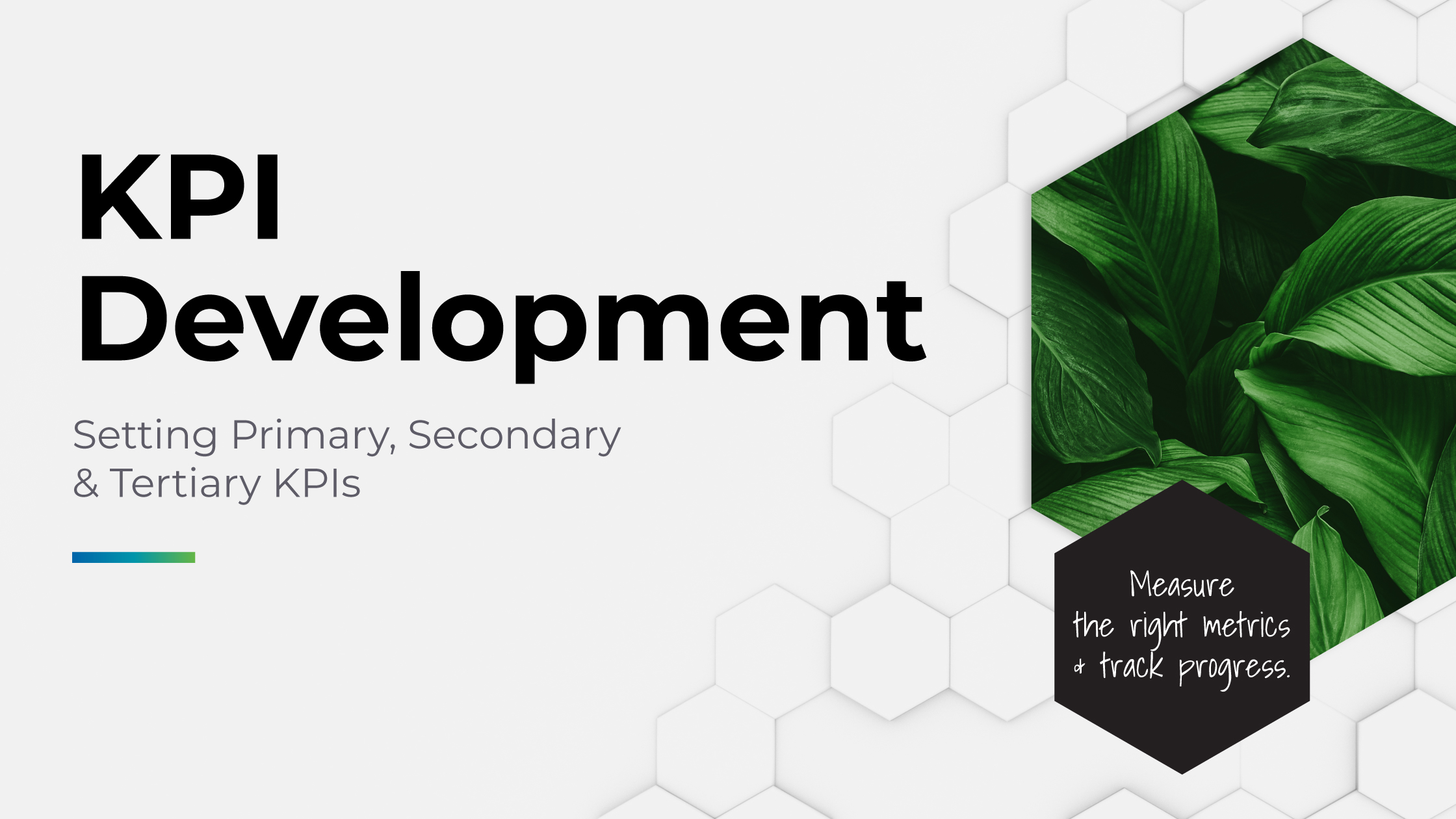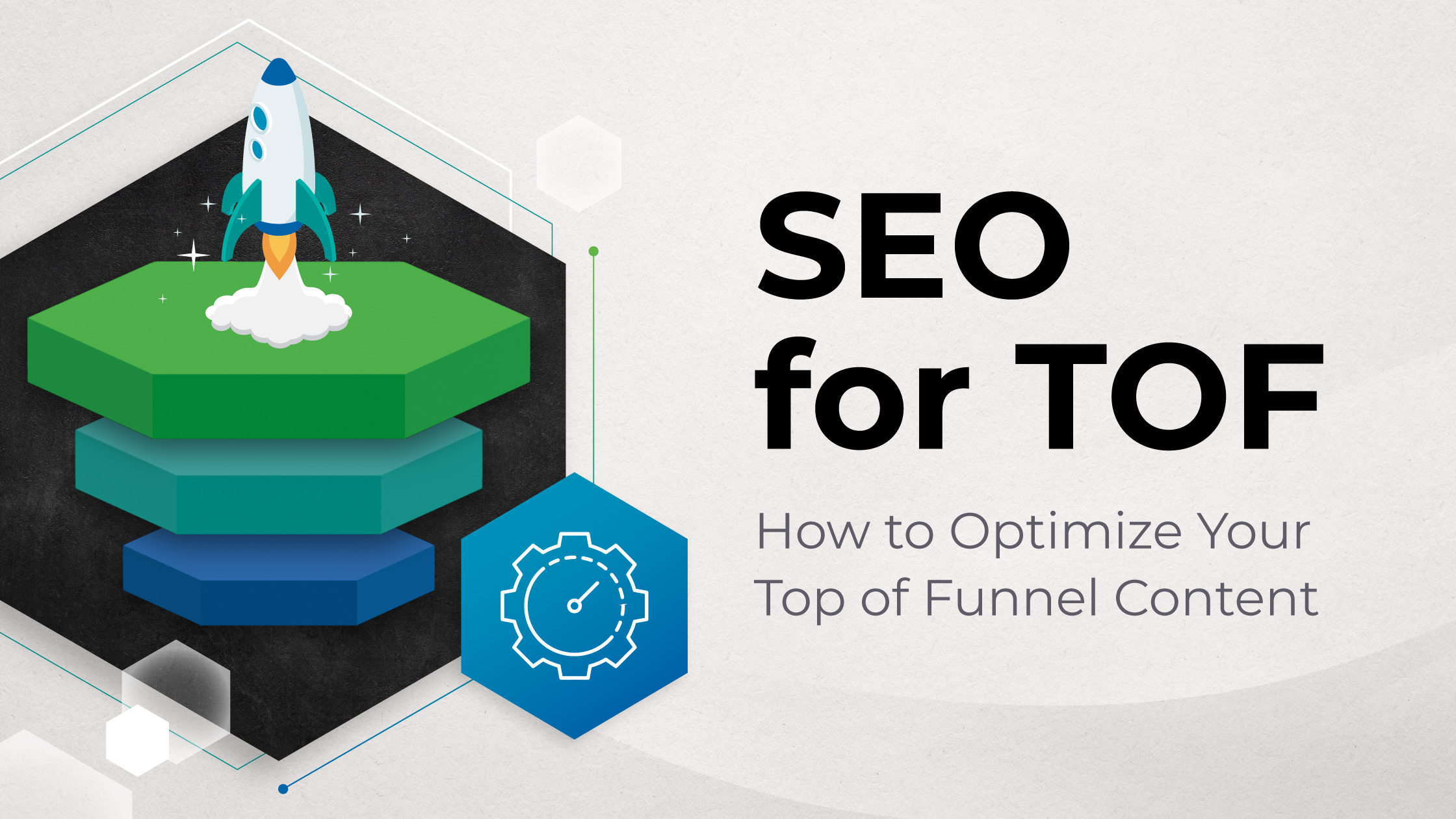
In maybe our most important blog post to date on rethinking the marketing funnel, we emphasized key details like:
- Category leaders spend over 50% of their marketing dollars on the top of the funnel (TOF or TOFU).
- With that spend, category leaders are generating over 60% of their total website traffic from direct and organic search alone. This drastically reduces their paid media budget and overall dependency on black box advertising tools like Advantage+ and Performance Max.
So you read that piece and have a newfound respect for the top of the funnel. You’re ready to dive into the Ocean of Upper Funnel Awareness. Fantastic!
But where exactly should you begin?
Our recommendation for most brands, whether B2B or B2C, is SEO for top of funnel optimization—which for us, begins and ends with content.
Keep reading for why we suggest focusing on SEO and our step-by-step guide on how to accomplish this.
What is top of funnel (TOF) content?
Here’s a quick refresher:
The marketing funnel (aka: sales funnel) is a conceptual schema that outlines the process of acquiring a new customer/client.
For the highest performing brands, the top stage of the funnel is always the largest portion. This is the point in the journey where people who are currently unaware of your product or service discover it for the first time.
Top of funnel (TOF) content refers to all content marketing efforts directed at this initial awareness point.
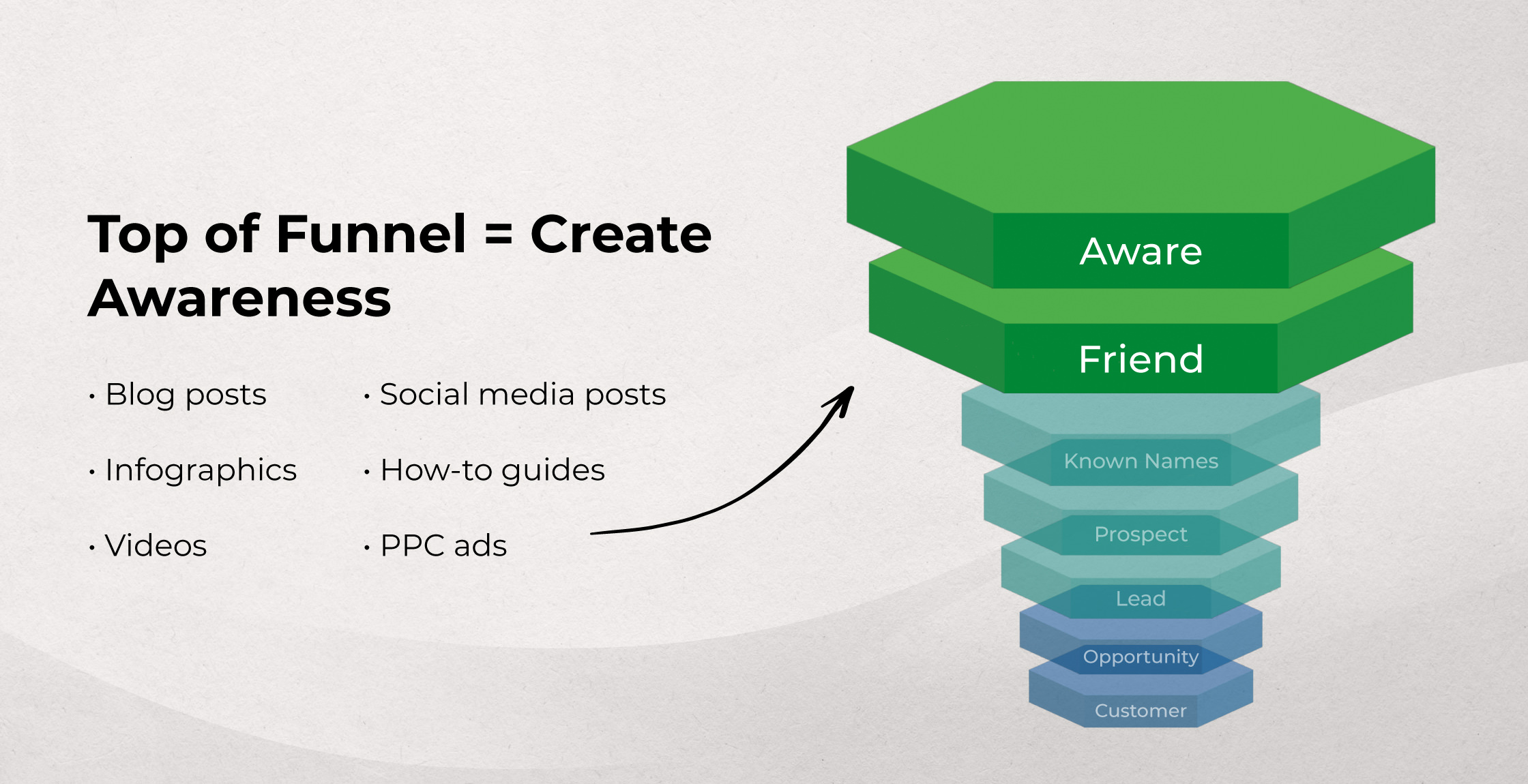
Why is it important to optimize TOF content for search engines?
Recommending an emphasis on top of funnel SEO content does NOT mean we have an abiding hatred of ads. Our paid media strategists implement highly effective campaigns every day, many of which contain a TOF component.
We’re advocating for marketing first principles rather than an overreliance on a single channel or tactic. And more precisely, we’re citing the longstanding evidence that the highest performing brands place a greater emphasis on organic awareness, of which SEO is a sizable component.
As we mentioned above, the Rethinking the Marketing Funnel piece captures it all, but here’s a synopsis:
- For many years, Google and Meta made it easy for brands to dump dollars at the bottom of the funnel and immediately find ready-to-buy customers. Ahh, it was a good time.
- While chasing BOFU metrics, the platforms also placed less focus on optimizing the upper funnel and created siloed offerings that prevented holistic paid campaigns.
- Then Apple introduced iOS privacy changes that severely restricted tracking capabilities, and a while after that, third-party cookies were put on life support. Their end is nigh…
- As this all played out, many marketers sank into an identity crisis. “What is this life?!? How do we do this now?”
- But you know who was just fine? Category leaders who’d never doubled down on the bottom of the funnel. These brands have consistently spent over 50% of their budget on the top of the funnel (mostly organic awareness), approximately 35% on the middle of the funnel, and only about 15% on the lower funnel.
Optimized SEO that generates awareness at the top of the funnel is a crucial aspect of a holistic marketing ecosystem that keeps your funnel flowing with high-quality opportunities so you can maintain and/or increase conversion rates.
Benefits of optimizing TOF content for organic search
1. Cost-effectiveness
The overall cost of SEO content as compared to paid advertising is night and day for most brands. And with highly optimized content that ranks well in search engines, an initial SEO investment can yield ongoing dividends long after the traction of a paid ad has come to a halt (not to mention the major inefficiencies of total reliance on paid advertising).
2. Visibility for the long haul
Performance generally focuses on today’s revenue. Growth certainly cares about today, but is also looking at the long-term picture. Successful SEO efforts can provide long-term visibility that continually attracts new users over the long haul.
3. Targeted reach
SEO lets brands target (and in the best cases, “own”) specific keywords and topics relevant to their target audience’s interests and pain points. Users already searching for your key terms are much less expensive to acquire and are more likely to move through the funnel faster.
4. Credibility and trust
SEO content that ranks highly in search engines is often perceived as more credible, which helps to build trust. This expands a brand’s opportunity to establish itself as a reputable authority.
5. High SEO domain authority supports any paid campaigns
This is a biggie. Most brands are unaware that poor SEO health can actually tank paid campaigns. Why? The Google business model depends on feeding users the most high quality experience. If your site doesn’t meet its standards, Google will suppress paid media traffic. Yes, even though you paid for that traffic.
The marketing math behind TOF SEO efforts
Wouldn’t it be helpful if you could make revenue projections based on your planned SEO investment? Surprise! That’s just a regular Tuesday for us.
We use an SEO forecasting scorecard tool to make performance projections, increase the efficiencies of our SEO strategy, and manage seasonality.
For the fullest view of your growth opportunities, come play around with our just-released Marketing ROI Calculator. Use it to calculate the exact number of channel impressions you need to hit your revenue goals.

A Client-Partner Example
Below is a snippet of the performance projections we put together for one of our eCommerce client-partners.
Based on Google’s published click through rate (CTR) position, we were able to provide our client-partner with a clear picture of the revenue gains available if they ranked within the top 5 results for their key product terms, which then helped to validate the level of investment they chose to make in SEO top of funnel content.
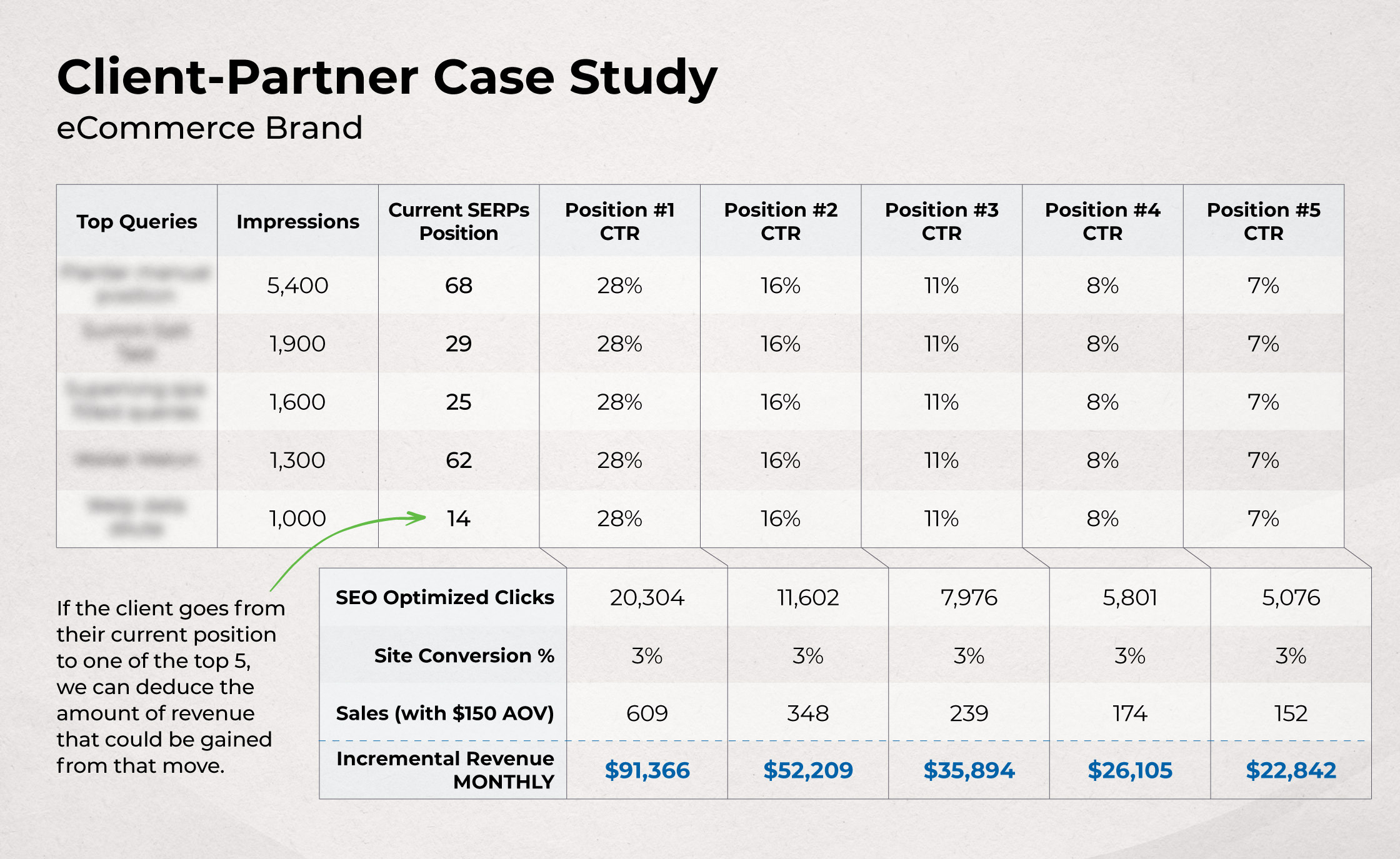
How to use SEO for top of funnel content
Below, we’re sharing a step-by-step guide for how to create content that drives performance by emphasizing SEO efforts at the top of the funnel. However, please consider these two important caveats:
1. Technical SEO is just as important as SEO content creation.
2. SEO is not a simple plug n’ play template that any reasonably intelligent human can effectively implement. Optimal SEO results require the expertise of a seasoned SEO strategist. (Our SEO bench has an average of 12 years’ experience.)
Step #1: Keyword research
Conduct keyword research on your category and brand terms. This step is about identifying the most relevant long-tail keyword opportunities (informational, navigational, transactional) while considering factors like keyword difficulty and competition.
Step #2: Optimize page titles and meta descriptions
Construct keyword-rich page titles and meta descriptions that quickly convey the value users will receive by clicking through from search engine results.
Step #3: Create valuable content
This may sound obvious but it needs to be said. Publishing content and publishing high-quality content consistently are not the same thing. Some brands aren’t as objective about the quality of their content as they could be, which is why it can be useful to collaborate with an external content marketing vendor.
Content formats that typically work well for TOF content are:
- Blog posts
- Infographics
- Videos
- And how-to guides like this one!
Step #4: Optimize content
- Incorporate your target keywords in multiple locations without losing readability or contextual relevance. However, do this in moderation. Keyword stuffing can hurt the user experience and in turn, SEO performance.
- Organize your content with clear headings, subheadings, and bullet points for easy scanning by users and search engines.
- Use semantic HTML tags for headings to signal content hierarchy.
- Include internal links to relevant pages on your website to guide users to other valuable content and improve overall site navigation. Internal linking helps search engines understand the relevance and structure of your website.
- Optimize images by compressing them to reduce page load times. Use descriptive alt tags with relevant keywords to make your images more accessible to search engines.
Step #5: Mobile-friendly design
Nope, mobile-friendliness is not ubiquitous yet but it’s certainly a top factor in SEO rankings. Many brands are unaware of functionality flaws in their site’s mobile experience. This is another task that your SEO consultant will be responsible for, in conjunction with your development team.
And before you say, “But no one goes to my site on mobile!”… Google doesn’t care. It is assessing the health of your website across any use case. Even if mobile is less than 10% of actual traffic, if the mobile experience doesn’t meet Google’s standards, your site will be penalized.
Step #6: Publish and promote
This is the GO LIVE step. Publish that content! And leverage your social channels, email newsletters, and relevant online community spaces, to boost visibility and potentially attract more inbound links.
Step #7: Monitor and analyze performance
Tools like Google Analytics and Google Search Console will help you monitor key metrics like organic traffic, bounce rate, and time on page to identify areas for improvement and supplementary content opportunities for future publication.
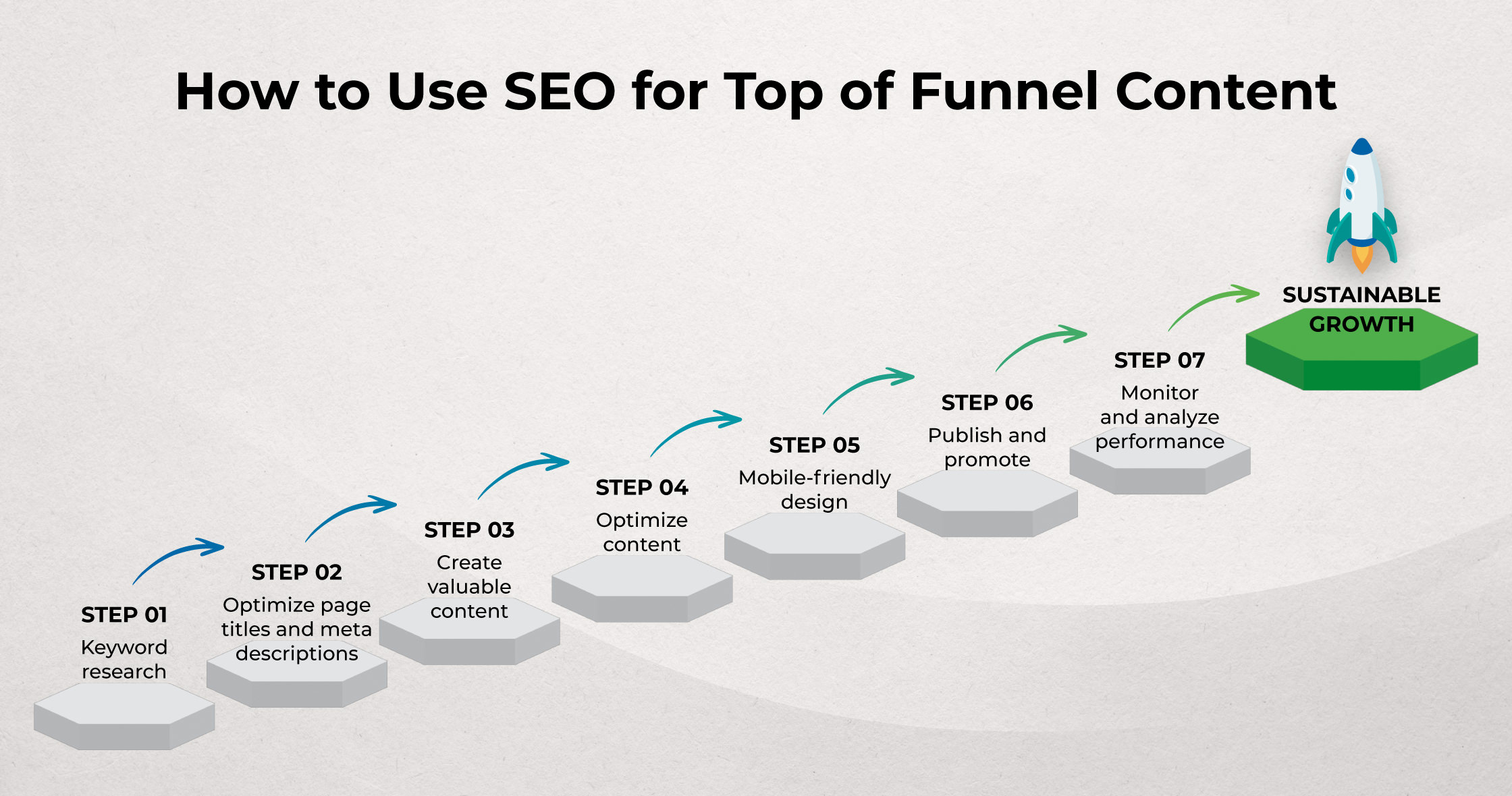
TL;DR on SEO for top of funnel awareness
- The highest performing brands invest over 50% of their marketing budget in organic search (SEO) and direct traffic.
- In a landscape where iOS privacy changes have massively restricted what brands can track, and third-party cookies have just about gone bye-bye, brands seeking sustainable growth must return to marketing first principles, which requires widening the top of the funnel (awareness).
- SEO performance is not a guessing game. With the most basic eighth grade algebra, you can draw a direct ROI line from your SEO investment to bottom-line revenue. Come play with our Marketing ROI Calculator and see for yourself!



